What is Shiatsu? An Overview of Shiatsu Massage
You've likely familiar with the term Shiatsu and know that it's related to massage therapy, but don't know much more about it. In this article, we will explore Shiatsu in depth, including: The definition of Shiatsu History of Shiatsu Clinical evidence for Shiatsu Studying Shiatsu at a massage therapy school Massage Therapy career paths with Shiatsu What is Shiatsu? Shiatsu, literally meaning “figure pressure,” is a Japanese massage modality that was invented by Tokujiro Namikoshi during the 1920s. It is based on the principles of Traditional Chinese Medicine (TCM) and is considered a form of acupressure massage. Shiatsu is historically believed to have been derived from a traditional Japanese massage style known as Amna, which is itself based on Tuina, which is a form of traditional Chinese massage. Shiatsu is unique from other forms of acupressure, in that it exclusively utilizes finger and thumb massage techniques to treat patients’ pain and health conditions by applying rhythmic pressure along the body’s acupressure points. This ease of application allows for shiatsu to be applied in virtually any massage setting, ranging from fully-clothed patients seated in massage chairs to undressed patients laying on massage tables. Additionally, it is also common for Shiatsu to be practiced as a standalone treatment or in conjunction with Western massage treatments, such as Swedish Massage. Like other forms of alternative medicine, Shiatsu is based on a holistic model of the body. However, it also has the benefit of integrating well with conventional medicine. This makes Shiatsu a good modality to specialize in for Massage Therapists that want to work in a holistic or integrative health setting, such as a Pain Clinic or Chiropractor’s Office. To earn a Shiatsu certification, you will need to earn one from a reputable educator, such as an acupuncture school. History of Shiatsu As mentioned earlier, Shiatsu is based on Traditional Chinese Medicine and the history of Shiatsu begins with the introduction of Chinese Medicine in Japan. During the early Middle Ages (around 700 AD), Traditional Chinese Medicine (TCM) was introduced in Japan, probably through Korea. This included healing modalities that are still practiced today, such as acupuncture, but also, Tui Na or tuina (literally Push-Hands), which is a Chinese Massage modality that is practiced by applying hand and finger pressure across the body. Over time, Tuina was modified by its Japanese practitioners. During the 1300s, Amna, a Japanese derivation of Tuina had been established as its own modality by Akashi Kan Ichi, a physician and massage therapist. However, Amna didn’t really take off until the 1600s when it was popularized by Sugiyama Waichi, a famous physician and acupuncturist of the time. It is important to note that Sugiyama Waichi was blind, which had an effect on the culture of the massage profession. Over the next several hundred years, massage would be largely practiced by blind practitioners. In fact, at various times, the Japanese government even protected the practice of massage by limiting the profession to the blind, since it was one of the few ways they could earn income. Amna eventually became the dominant massage style practiced in Japan, and practicing it required government licensure. Shiatsu Develops The story of Shiatsu begins in 1912, when a gifted child by the name of Tokujiro Namikoshi purportedly healed his mother’s rheumatism using only finger and hand massage techniques. His reputation as a gifted healer spread and Namikoshi continued to treat people using his unique style of massage. However, he was eventually arrested for practicing massage without a license, and at the suggestion of his brother, Namikoshi underwent formal training in Amna. He continued to refine his massage style, which, unlike Amna, only utilized finger, palm, and hand techniques. To distinguish his style from Amna, he named it Shiatsu, which means finger-pressure. During the 1950s, Shiatsu exploded in popularity and became a worldwide phenomenon. In 1957 the Japanese Ministry of Health, Labor, and Welfare officially licensed the Japan Shiatsu School to teach Shiatsu massage but considered it to be a subset of Amna. It wasn’t until 1964, that Shiatsu was recognized by the Japanese government as its own healing modality. Tokujiro Namikoshi continued to spread Shiatsu around the world. He died at the age of 94 in September 2000. How does Shiatsu Work? Shiatsu works by applying finger and palm pressure at the acupoints to improve a patient’s wellness, by reducing stress and improving the flow of blood in the body. Like all forms of Asian Bodywork Therapy, Shiatsu is based on Traditional Chinese Medicine. Historically, Traditional Chinese Medicine viewed illness as a disharmony in the body’s non-physical nature, Qi (also known as Chi), and taught that role of medicine should seek to balance qi in the body. Since qi was
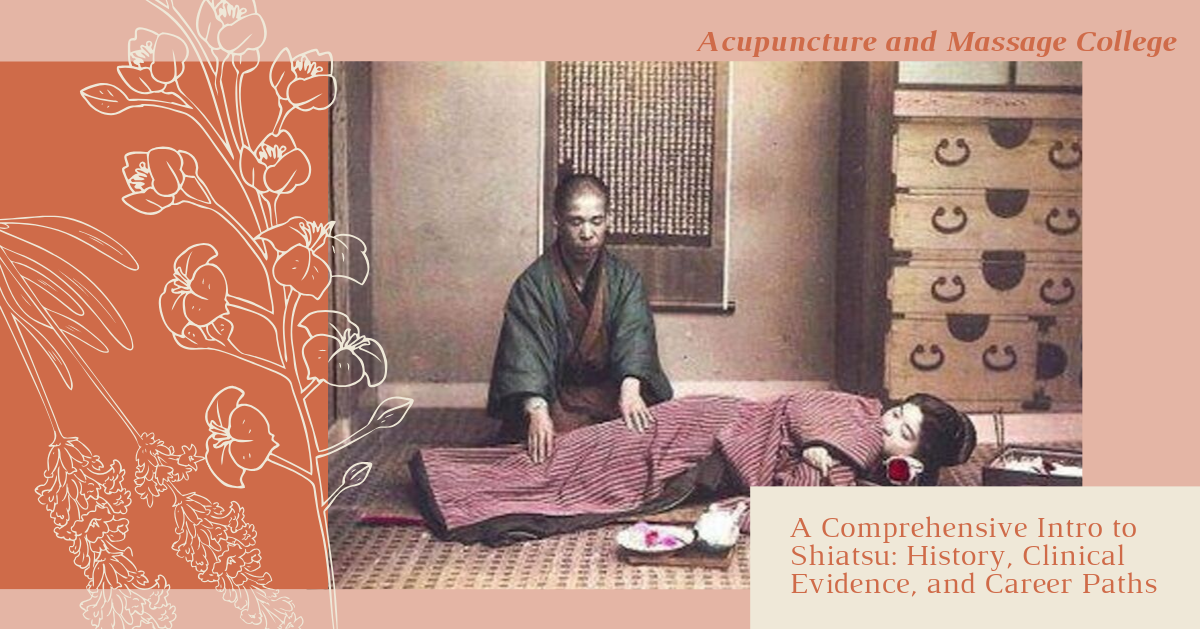
You've likely familiar with the term Shiatsu and know that it's related to massage therapy, but don't know much more about it. In this article, we will explore Shiatsu in depth, including:
- The definition of Shiatsu
- History of Shiatsu
- Clinical evidence for Shiatsu
- Studying Shiatsu at a massage therapy school
- Massage Therapy career paths with Shiatsu
What is Shiatsu?
Shiatsu, literally meaning “figure pressure,” is a Japanese massage modality that was invented by Tokujiro Namikoshi during the 1920s. It is based on the principles of Traditional Chinese Medicine (TCM) and is considered a form of acupressure massage.
Shiatsu is historically believed to have been derived from a traditional Japanese massage style known as Amna, which is itself based on Tuina, which is a form of traditional Chinese massage.
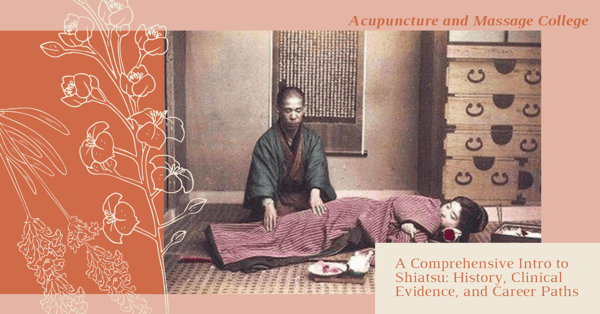
Shiatsu is unique from other forms of acupressure, in that it exclusively utilizes finger and thumb massage techniques to treat patients’ pain and health conditions by applying rhythmic pressure along the body’s acupressure points.
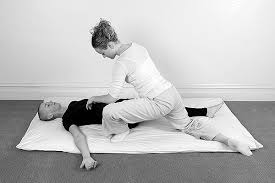
This ease of application allows for shiatsu to be applied in virtually any massage setting, ranging from fully-clothed patients seated in massage chairs to undressed patients laying on massage tables. Additionally, it is also common for Shiatsu to be practiced as a standalone treatment or in conjunction with Western massage treatments, such as Swedish Massage.
Like other forms of alternative medicine, Shiatsu is based on a holistic model of the body. However, it also has the benefit of integrating well with conventional medicine. This makes Shiatsu a good modality to specialize in for Massage Therapists that want to work in a holistic or integrative health setting, such as a Pain Clinic or Chiropractor’s Office.
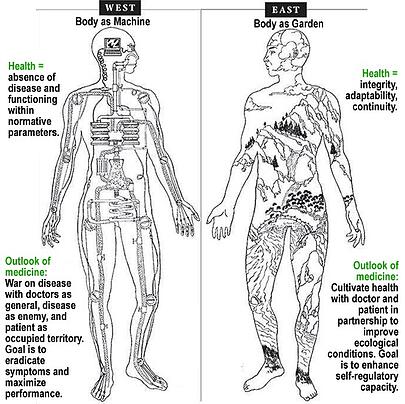
To earn a Shiatsu certification, you will need to earn one from a reputable educator, such as an acupuncture school.
History of Shiatsu
As mentioned earlier, Shiatsu is based on Traditional Chinese Medicine and the history of Shiatsu begins with the introduction of Chinese Medicine in Japan.
During the early Middle Ages (around 700 AD), Traditional Chinese Medicine (TCM) was introduced in Japan, probably through Korea. This included healing modalities that are still practiced today, such as acupuncture, but also, Tui Na or tuina (literally Push-Hands), which is a Chinese Massage modality that is practiced by applying hand and finger pressure across the body.
Over time, Tuina was modified by its Japanese practitioners. During the 1300s, Amna, a Japanese derivation of Tuina had been established as its own modality by Akashi Kan Ichi, a physician and massage therapist.
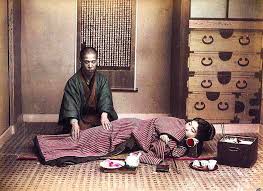
However, Amna didn’t really take off until the 1600s when it was popularized by Sugiyama Waichi, a famous physician and acupuncturist of the time. It is important to note that Sugiyama Waichi was blind, which had an effect on the culture of the massage profession. Over the next several hundred years, massage would be largely practiced by blind practitioners. In fact, at various times, the Japanese government even protected the practice of massage by limiting the profession to the blind, since it was one of the few ways they could earn income.
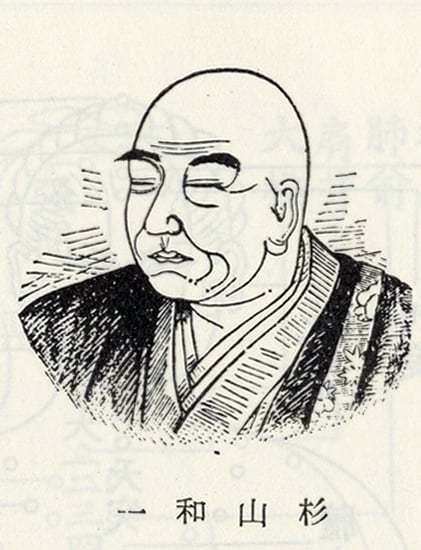
Amna eventually became the dominant massage style practiced in Japan, and practicing it required government licensure.
Shiatsu Develops
The story of Shiatsu begins in 1912, when a gifted child by the name of Tokujiro Namikoshi purportedly healed his mother’s rheumatism using only finger and hand massage techniques. His reputation as a gifted healer spread and Namikoshi continued to treat people using his unique style of massage.
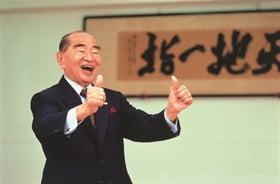
However, he was eventually arrested for practicing massage without a license, and at the suggestion of his brother, Namikoshi underwent formal training in Amna. He continued to refine his massage style, which, unlike Amna, only utilized finger, palm, and hand techniques. To distinguish his style from Amna, he named it Shiatsu, which means finger-pressure.
During the 1950s, Shiatsu exploded in popularity and became a worldwide phenomenon. In 1957 the Japanese Ministry of Health, Labor, and Welfare officially licensed the Japan Shiatsu School to teach Shiatsu massage but considered it to be a subset of Amna. It wasn’t until 1964, that Shiatsu was recognized by the Japanese government as its own healing modality.
Tokujiro Namikoshi continued to spread Shiatsu around the world. He died at the age of 94 in September 2000.
How does Shiatsu Work?
Shiatsu works by applying finger and palm pressure at the acupoints to improve a patient’s wellness, by reducing stress and improving the flow of blood in the body.
Like all forms of Asian Bodywork Therapy, Shiatsu is based on Traditional Chinese Medicine.
Historically, Traditional Chinese Medicine viewed illness as a disharmony in the body’s non-physical nature, Qi (also known as Chi), and taught that role of medicine should seek to balance qi in the body.
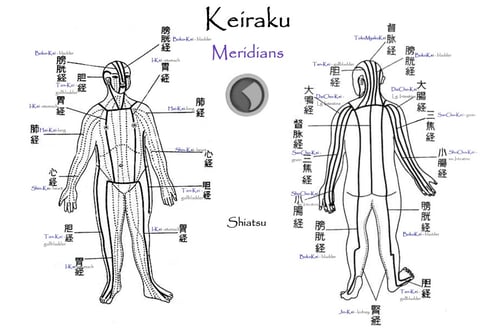
Since qi was said to travel through the body via meridian channels, there were certain spots on the human body that corresponded to qi “location,” which are known as acupuncture points or acupoints. As so, external medicine was applied at the acupoints. External Medicine includes acupuncture, moxibustion, and of course, massage (like Shiatsu).
In more recent times, there has been a movement that evaluated the concept of acupoints from a scientific standpoint. This movement is collectively referred to as Evidence-Based Acupuncture holds that acupoints actually correspond to points of physical importance in the body, such as spots on the body where neurons are particularly sensitive, and thus, are effective points where healing, such as acupressure can be applied.
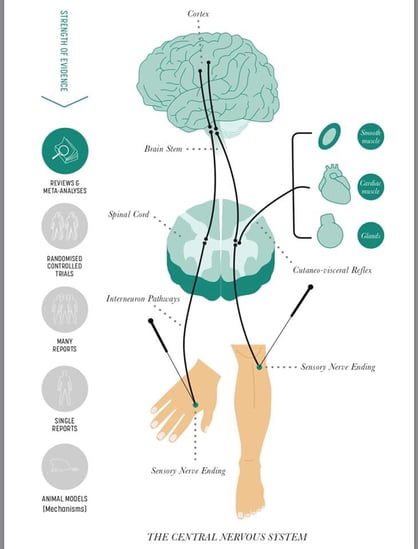
Regardless of the view, there is clinical evidence that Shiatsu and acupressure are effective healing modalities for a range of disorders and illnesses.
Clinical-Evidence for Shiatsu
There is clinical evidence that suggests that Shiatsu and other forms of acupressure are effective at treating or helping to treat a variety of disorders, such as anxiety and insomnia.
It is important to note that while Shiatsu is a form of acupressure massage, not every kind of acupressure massage is necessarily Shiatsu (e.g. Tuina). However, there is a lot of technical cross-over between the two approaches. Many massage therapists are commonly trained in both Shiatsu and acupressure, and will “mix” the modalities during their sessions. Furthermore, in clinical literature, Shiatsu is often used interchangeably with acupressure, and/or grouped under its border definition.
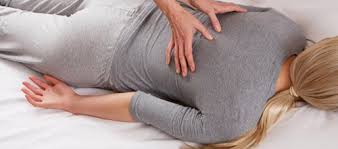
Because of this common cross-over, I have included examples from acupressure massage below.
A lot of the research is especially promising for cancer patients since Shiatsu/acupressure is non-invasive and will not interact negatively with other medications.
For example, a study from 2014 suggests that acupressure reduces cancer-related fatigue and increases activity levels in lung cancer patients. Another study from 2017 suggests that acupressure increases blood SCF levels significantly, which may relieve chemotherapy-induced myelosuppression in gynecologic cancer patients.
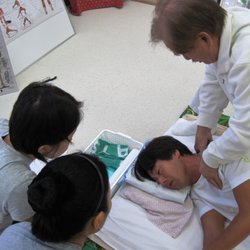
Shiatsu/acupressure is also good at treating fatigue and anxiety-related disorders in non-cancer patients. For example, a study from 2016 suggests that acupressure may help to reduce gastroscopy-induced nausea and vomiting. Another study from 2017 suggests that acupressure may be effective at treating sleep disorders.
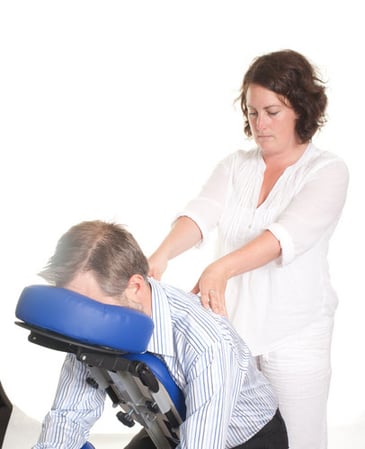
While that experiment was conducted on an elderly population, there’s no reason that suggests that it couldn’t also work in younger populations. For example, a study from 2018 revealed that acupressure may increase VO2 max performance in healthy-male athletes; the reason for this is probably because the massage improved relaxation and reduced performance anxiety. And it’s not just patients that are being treated. Shiatsu is also administered to hospital caregivers in France to treat work-related burnout, which is a form of chronic stress.
Shiatsu and Massage Therapy Career
Getting certified in Shiatsu is a good specialization that can help to advance your massage therapy career.
As mentioned earlier, Shiatsu utilizes a holistic or non-conventional view of the human body. As such, Shiatsu is considered a form of Holistic Medicine. This makes Shiatsu a great modality to study for massage therapists that want to work in an Alternative or Integrative Medical setting.
Here are some of the places that tend to employ Shiatsu specialists.
- Chiropractors
- Naturopathic Doctors
- Acupuncturists
- Pain Clinics
- Integrative Medicine Specialists
Shiatsu Certification
In order to legally practice Shiatsu in the US, you will need to
- Become a Licensed Massage Therapist
- Earn a Certification of Specialization in Shiatsu.
Keep in mind that the US Department of Education (USDE) classifies Shiatsu as an Asian Bodywork Therapy (ABT), rather than a form of Massage Therapy. This is because Shiatsu utilizes a TCM model of the body, rather than a purely-physical one.
As so while many massage schools offer an introduction-level course in Shiatsu, very few teach enough Oriental Medicine theory that will give you the credentials needed to claim a high-level knowledge of Shiatsu.
As such, you will need to earn a Shiatsu Certification at a massage program approved by the American Organization for Bodywork Therapies of Asia (AOBTA) or from an Acupuncture School (like Acupuncture and Massage College in Miami, FL) that is programmatically accredited by the Accreditation Commission for Acupuncture and Herbal Medicine (ACAHM), which is the USDE recognized accreditation-agency for teaching Oriental Medicine in the US.












